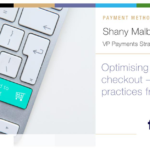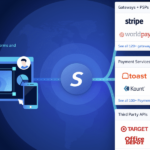With e-commerce expected to continue growing, retailers recognize the need to drive revenue while providing a strong experience, including a seamless checkout process.
The holiday season is a magical time for both consumers and retailers. Shoppers eagerly hunt for the perfect gifts, while e-commerce businesses prepare to capitalize on the surge in demand. With e-commerce expected to continue growing and consistently surpassing total retail growth worldwide, merchants recognize the need to drive revenue, while providing a strong consumer experience, including a seamless checkout process.
The checkout challenge: Converting intent into action
The significance of a smooth and intuitive checkout process during the holidays cannot be overstated. The holidays are busy not just for shopping but for consumers’ lives in general. With mobile increasing its share of e-commerce, holiday shopping is moving from a focused hunt for that perfect gift to a mad grab in the margins of a busy day. The efficiency of social media marketing has driven consumers to interact with the right brands and products outside of shopping-focused moment. At these brief and crucial moments, an overly complex or confusing checkout process is simply untenable, and failure to convert can make the purchase all but unrecoverable.
Research shows that 55% of merchants believe consumers abandon their shopping cart because their preferred payment option was not offered . The manual process of inputting payment information is also a deterrent, as 74% of merchants believe consumers abandon carts when they must manually enter their 16-digit credit card information. If your e-commerce traffic distribution mirrors this pattern, it suggests that a significant portion of your potential revenue may be slipping through the cracks.
The power of frictionless checkout
Frictionless checkout continues to have a major impact on retail and ecommerce experiences, especially during the holiday season when shoppers are pressed for time and need to complete their purchases efficiently. The crux of the matter lies in reducing the need to supply new information or take unnecessary action beyond the intent to buy. Retailers must place a strong emphasis on crafting an experience that requires extremely little of the consumer.
For merchants, the first step in achieving this goal is to optimize initial stages of the checkout process, removing unnecessary complexity around customization options and SKUs and the moving the consumer to the confirmation page as seamlessly as possible. Performance matters, again even more so in mobile, so loading times during the checkout process can be a major point of friction.
Implementing single-click purchasing: The game-changer
One proven method for achieving a seamless checkout process is through the implementation of standardized wallet flow. Well-designed wallets eliminate the need for consumers to repetitively input their payment card details, billing addresses, and shipping information during each purchase. Instead, with a standard and familiar interaction the crucial payment and fulfillment information is confirmed, the transaction is completed, and the product or service is on its way to the consumer.
Large merchants may have the luxury of implementing “one-click” checkout by driving consumer login and account creation. Wallets bring these benefits to the masses. In essence, wallet purchasing operates as a digital shortcut to consumer satisfaction.
Research from Cornell University reveals that once consumers enrolled in an online retailer’s “one-click” checkout service, their spending gradually rose, with an average increase of 28.5% compared to their previous purchase levels. Ease of use at checkout also drives repeat consumers. The same Cornell study shows that over the 15 months following signup, one-click buyers visited the website on average 7% more than before signup, viewed 9.3% more pages on the website, and spent 7.8% more time on the site per visit.
Growing security and trust in e-commerce
Trust and security stand as the bedrock upon which the entire ecosystem of e-commerce payments is built. In the intricate dance between consumers and online retailers, these two factors are the partners that ensure a harmonious transactional experience but are often built blindly between the environments. Consumers’ banks know little about the transaction until the last moment, and merchants know little about the consumer. Trust is assumed.
The importance of trust and security in e-commerce payments is further underscored by the findings that a resounding 70% of merchants1, who are the driving force behind the vast -ecommerce landscape, shared that trust and security remain critical when it comes to integrating payment solutions into their platforms. This reaffirms that, in the digital age where personal and financial information is exchanged with the click of a button, establishing and maintaining trust is nonnegotiable.
Moreover, security isn’t just a checkbox on a compliance list; it’s the shield that safeguards the integrity of the entire payment process. It includes robust encryption methods, rigorous identity verification, and proactive measures to detect and thwart fraud attempts. It is the commitment to not only meeting but exceeding industry standards, instilling confidence that every transaction is shielded from any malicious intent.
By optimizing the initial stage of checkout, implementing standardize wallet purchasing, and emphasizing trust and security, retailers can minimize cart abandonment rates and boost their holiday revenue. As we gear up for the next holiday season, remember that every click, every second, and every decision in your checkout process matters. Prioritize seamlessness and watch as your online store becomes a holiday shopping destination that consumers return to year after year.
Matt Miller is a seasoned innovator and accomplished leader in payments product management, currently holding the position of Vice President of Product for PazeSM. In this role, he oversees the strategic trajectory, development, and growth of PazeSM, a new digital payment method offered by banks and credit unions.





